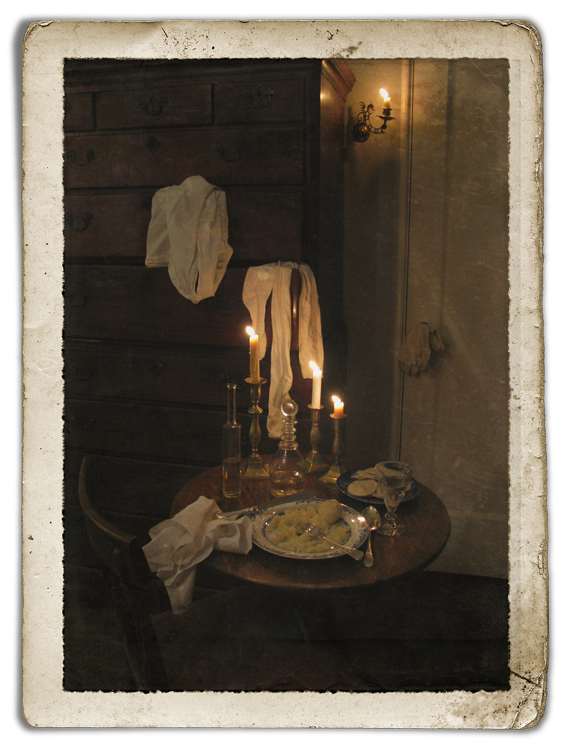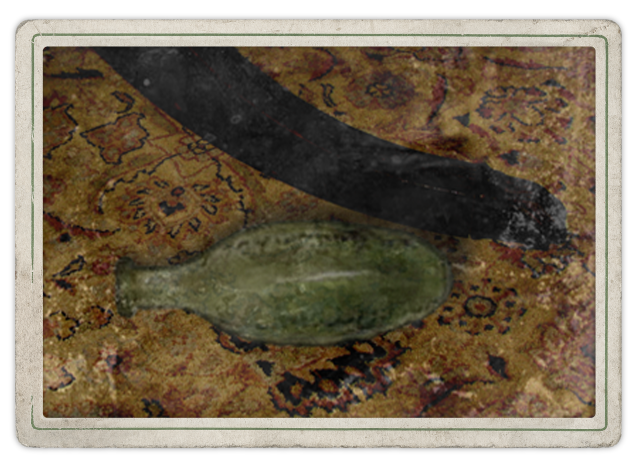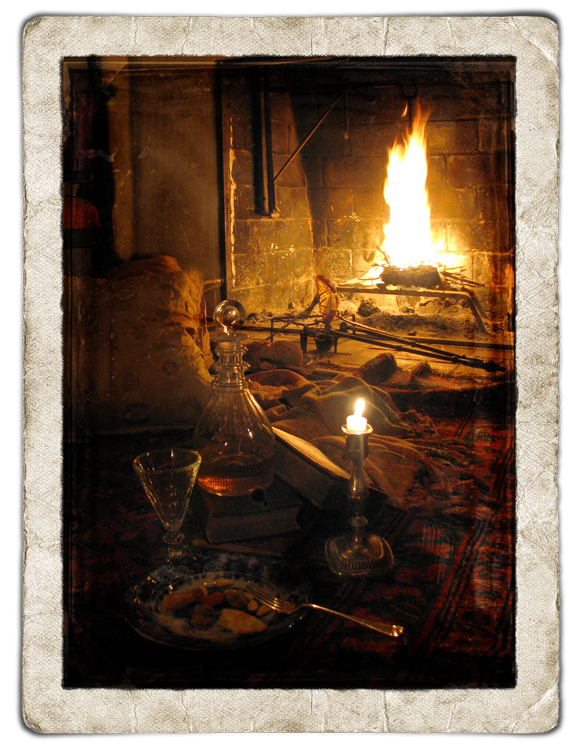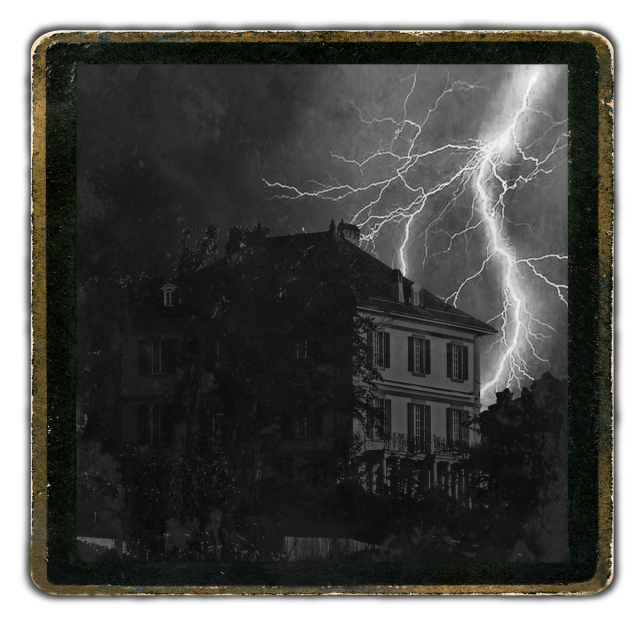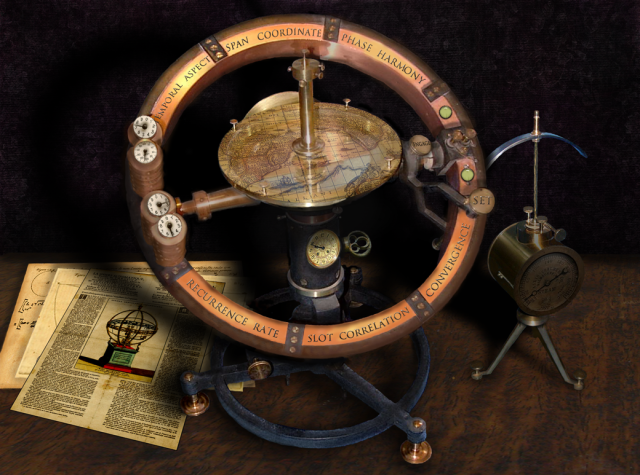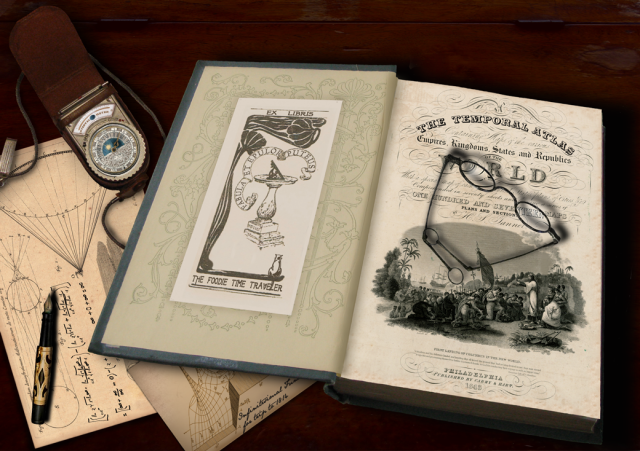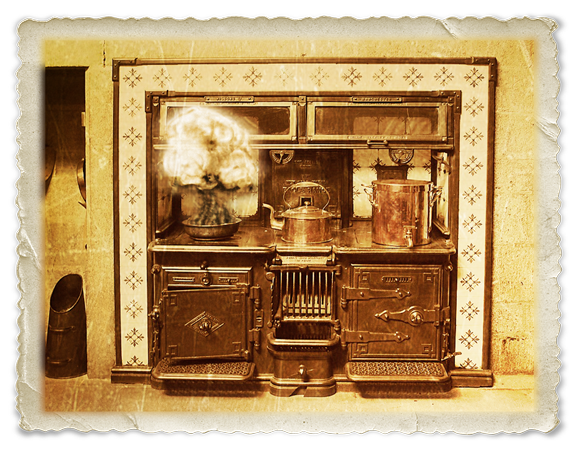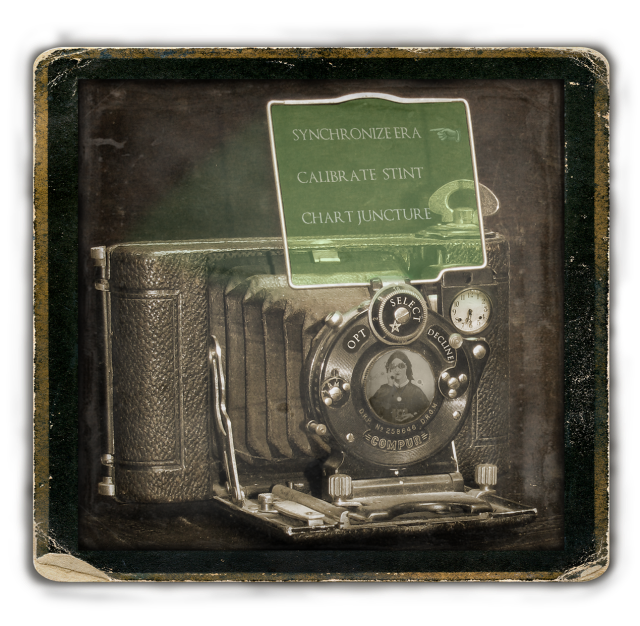 Many Readers have been asking just what is the “InterContinuum Photographic Chroniclelizer” that I mentioned in my last discussion and why did I neglect to include any interesting bits of information on it? My sincerest apologies! In order to avoid any perturbation as a direct result of unresolved curiosity, I suggest that you refer to the brief explanation of the instrument on pages 61 and 62 in A Visitor’s Guide to Time Travel. I have also included an image of my own Chroniclelizer to study.
Many Readers have been asking just what is the “InterContinuum Photographic Chroniclelizer” that I mentioned in my last discussion and why did I neglect to include any interesting bits of information on it? My sincerest apologies! In order to avoid any perturbation as a direct result of unresolved curiosity, I suggest that you refer to the brief explanation of the instrument on pages 61 and 62 in A Visitor’s Guide to Time Travel. I have also included an image of my own Chroniclelizer to study.
In the unfortunate event that you have left your copy of this invaluable book on a train (along with your umbrella) or somehow otherwise have annoyingly misplaced it, I will repeat the description contained in its pages below.
InterContinuum Photographic Chroniclelizer
“Highly recommended equipment for all temporalnauts, this state-of-the-art camera
provides the means to bring back to the present both the mundane as well as
extraordinary moments in time.
Images captured with this device remain trapped outside of the time-continuum
and inside the patented AntiChronology Protection Chamber.
There, they remain independent and safely captured
within the Event-Duration film.
Through its exclusive Green Screen Technology, the Chroniclelizer
offers the time traveler unsurpassed ease in adjusting the voyage
predictability factors while on the road too!”
I trust that this helps put an end to any befuddlement. And now I must return to my work in the library and transcribe into a notebook the recipes that will recreate those wonderful gougères that I saw during my trip to the summer of 1816. But more on that later…


